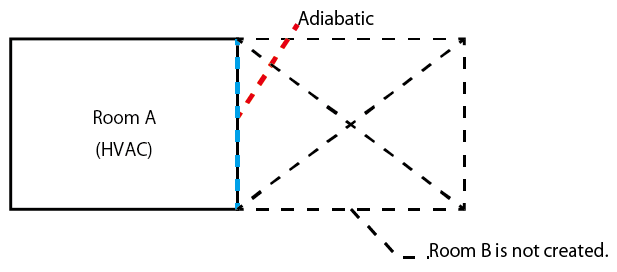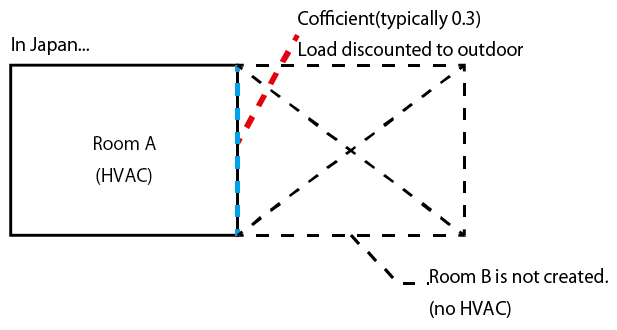Hello!
I am a newbie when it comes to this software.
So, please forgive me if I ask a rather rudimentary question.
I have a question about setting up adjacency insulation.
There are three main questions.
Think of all the diagrams as floor plans.
I believe that the current “Honeybee+” has an adjacency setting.
I understand that “adiabatic” in this setting means that it does not take into account the heat exchange between spaces, even if there are spaces next to each other. (fig1)
Specifically, I believe that this setting is recommended to be used when the adjacent spaces have the same air conditioning settings. (Since there is no difference in temperature between adjacent rooms…)
My first question is whether this is correct.
If it is correct, then the next question is.
Is it possible to simplify the model by using the insulation settings of RoomA and RoomB?
Reproducing all the rooms in a real building is a very burdensome task.
If I only need the calculation results for RoomA, if it is possible to set it up in this way, I can simplify the model considerably and reduce the burden, but what do you think? (fig2)

And now for the last question.
If it is possible to simplify it as in the second question, is there any way to simplify it in the same way when the adjacent room is a non-air-conditioned space?
In Japanese load calculations, the temperature difference between inside and outside is often set as a factor (typically 0.3). (fig3)
→Inside/outside temperature difference = coefficient * (design temperature - outside air temperature)

The results obtained with this method may be a little less accurate, but it can dramatically reduce the number of models (rooms).
In other words, the time and effort to create and set up the model is drastically reduced.
Is there a simplified way to set up Honeybee+ for this type of space where the adjacent rooms are not air-conditioned?
I don’t speak English, so I used the translation function.
I know this may be confusing, but please let me know!
Thanks for the great software.
